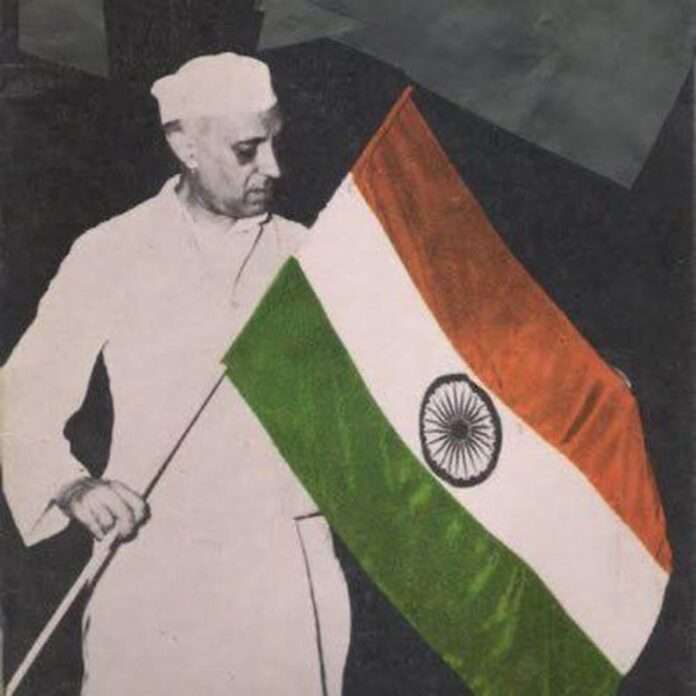The first PM said the National Flag reflects both the permanence of Indian culture and its dynamism
New Delhi: Even as the country is marking the ‘Har Ghar Tiranga’ campaign, history shows that India’s first Prime Minister Jawaharlal Nehru had vehemently defended the design of the National flag in the face of questions and criticism, a report in the Tribune, CChandigarh, says.
Portions from the “Selected Works of Jawaharlal Nehru” reveal that the former prime minister described the National Flag as a symbol of both the permanence of Indian culture and the dynamic quality of India and hoped it would be directed towards the betterment and liberation of the masses.
Responding to questions about the design of the National Flag raised in sections of the media at the time, Nehru wrote, “I am afraid I am unconvinced by any of the criticisms made of the design and I think that the Flag as adopted successfully represents both artistically and symbolically what it is meant to represent.”
Nehru said the Flag is above all a symbol. “This Flag of ours with the three colours and with the Charkha has been a symbol to us, for many years, of freedom and unity as well as the labouring masses of India.
“It would have been quite impossible for us to vary the Flag essentially without doing violence to that sentiment and the symbolism that has grown around it. The Charkha added a certain beauty of conception to the Flag. Because the full Charkha is not there now it must not be imagined that we have given up the Charkha or what it meant,” he wrote to a newspaper editor at the time.
The late prime minister said that in the resolution of the Constituent Assembly, it was stated clearly that the wheel in the centre of the Tricolour represented the Charkha.
Nehru said the Flag is above all a symbol. “This Flag of ours with the three colours and with the Charkha has been a symbol to us, for many years, of freedom and unity as well as the labouring masses of India.
“This symbolic representation of the charkha retains in its entirety the concept behind the Charkha and is in fact a continuation of that idea in a somewhat more feasible and artistic form which is more suited to the Flag. The suggestion that the wheel should have been bigger and should have covered part of the saffron and green strips shows a lack of appreciation of the art history of the entire design,” the first prime minister had said.
“The Flag, he insisted, “as adopted fulfilled all the requirements that we demanded from it, it was beautiful and artistic, essentially the Flag of Indian struggle for freedom and its triumph.”
Nehru also said that the Charkha was not casually chosen but was taken from the wheel of Asoka’s capital.
*********************************************************************
Readers
These are extraordinary times. All of us have to rely on high-impact, trustworthy journalism. And this is especially true of the Indian Diaspora. Members of the Indian community overseas cannot be fed with inaccurate news.
Pravasi Samwad is a venture that has no shareholders. It is the result of an impassioned initiative of a handful of Indian journalists spread around the world. We have taken the small step forward with the pledge to provide news with accuracy, free from political and commercial influence. Our aim is to keep you, our readers, informed about developments at ‘home’ and across the world that affect you.
Please help us to keep our journalism independent and free.
In these difficult times, to run a news website requires finances. While every contribution, big or small, will makes a difference, we request our readers to put us in touch with advertisers worldwide. It will be a great help.
For more information: pravasisamwad00@gmail.com



